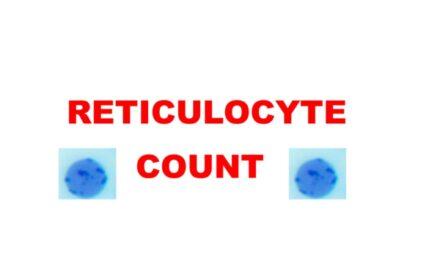1. What is Ascitis?
Accumulation of fluid between the peritoneal membranes is called ascitis. The fluid is called Ascitic fluid or peritoneal fluid.
2.What is the normal volume of peritoneal fluid?
The normal volume of peritoneal fluid is around 100ml and it is clear to straw colored.
3. What is abdominal paracentesis and what are its indications?
Abdominal paracentesis is a bedside procedure where the ascitic fluid is collected by insertion of needle into the peritoneal cavity. The indications are
a. Ascitis due to unknown cause
b. To determine the presence of infection in the ascitic fluid
c. To determine if there is hemorrhage into the peritoneal cavity
d. As therapeutic measure in cases of massive ascitis and instillation of cytotoxic drugs in cases of ascitis due to malignancy.
a. Ascitis due to unknown cause
b. To determine the presence of infection in the ascitic fluid
c. To determine if there is hemorrhage into the peritoneal cavity
d. As therapeutic measure in cases of massive ascitis and instillation of cytotoxic drugs in cases of ascitis due to malignancy.
4. What are the causes of Ascitis?
Ascitis can be caused by increased accumulation of the fluid or due to decreased reabsorption. The most common cause is cirrhosis. The other causes are
a. Cardiac failure
b. Renal failure
c. Malignancies
d. Infections like tuberculosis
e. Venous obstruction like Budd Chiari syndrome
f. Lymphatic obstruction
g. Pancreatitis etc..
a. Cardiac failure
b. Renal failure
c. Malignancies
d. Infections like tuberculosis
e. Venous obstruction like Budd Chiari syndrome
f. Lymphatic obstruction
g. Pancreatitis etc..
5. What are the differences between transudate and exudate?
The difference between transudate and exudate are as follows
| Transudate | Exudate | |
| Collection of fluid because of systemic disease where there is disturbance in regulation of fluid filteration and reabsorption | Fluid production due to direct involvement of peritoneal membranes | |
| Eg: Congestive heart failure, cirrhosis, nephritic syndrome | Eg: infections and malignancies | |
| Appeareance | Clear | Cloudy to turbid |
| Cellularity | Low | High |
| Proteins | Low | High |
| Clot | Does not clot | May clot |
| Specific gravity | Low | High |
| Albumin | Low | High |
| LDH levels | Less than 225U/L | Greater than 225U/L |
| Fluid to serum protein ratio | Less than 0.5 | Greater than 0.5 |
| Fluid to serum LDH | Less than 0.6 | Greater than 0.6 |
6. What are the normal parameters of Peritoneal fluid?
| Appeareance | Clear to pale yellow |
| Proteins | 0.3-2.5g/dl |
| Glucose | 60-100mg/dl |
| Amylase | Less than 50% of serum |
| Red blood cells | None |
| White blood cells | Less than 500 cells per microliter |
7. What are the Precautions one should consider before ascitic fluid analysis?
The precautions are
a. The fluid should be collected in a sterile container
b. Microbiological tests should be carried out first before distributing to other laboratories
c. For analysis of Serum –Ascitis Albumin Gradient (SAAG) blood and fluid samples should be taken concurrently.
a. The fluid should be collected in a sterile container
b. Microbiological tests should be carried out first before distributing to other laboratories
c. For analysis of Serum –Ascitis Albumin Gradient (SAAG) blood and fluid samples should be taken concurrently.
8. What is the volume of ascitc fluid required for analysis?
The minimum volume required is 30 ml. However at least 100 should be provided for cytological examination. For cell counts and cell typing , the fluid should be placed in EDTA tubes.
9. How do you differentiate peritoneal fluid from urine ( due to bladder rupture or trauma)?
Increased levels of peritoneal fluid urea nitrogen and creatinine levels , in association with elevated serum urea levels and normal serum creatinine levels suggests that the fluid is urine. The serum urea levels will be elevated due to back diffusion of Urea.
10. What is the significance of color in examination of ascitic fluid.?
The significance of color in examination of the ascitic fluid are as follows
| Clear to pale yellow | Normal |
| Cloudy to turbid | Infections, ruptured bowel, malignancy. |
| Milky | Trauma of lymph vessels or due to lymphatic obstruction. Also seen in tuberculosis, nephrotic syndrome and malignancies |
| Bloody | Trauma , severe infections , hemorrhagic pancreatitis, perforated ulcers of GI tract, malignancy , mesenteric vessels rupture |
| Green | Contamination due to bile due to perforated intestine/duodenal ulcer |
11. What is Serum –Ascitis Albumin Gradient ( SAAG)?
SAAG is a calculation used to determine the cause of ascitis. This calculated value is better indicator to know whether the ascitis is caused due to portal hypertension or not.
It is calculated as follows
SAAG = (serum albumin) – (albumin level of ascitic fluid). Note that both the values should be done at the same time.
If the SAAG is greater than 1.1 g/dl, it means “high gradient” and denotes that the ascitis is due to portal hypertension
If the SAAG is less than 1.1g/dl, it signifies “low gradient” and denotes that ascitis is not caused due to portal hypertension
It is calculated as follows
SAAG = (serum albumin) – (albumin level of ascitic fluid). Note that both the values should be done at the same time.
If the SAAG is greater than 1.1 g/dl, it means “high gradient” and denotes that the ascitis is due to portal hypertension
If the SAAG is less than 1.1g/dl, it signifies “low gradient” and denotes that ascitis is not caused due to portal hypertension
12. What are the causes of abnormal Serum –Ascitis Albumin Gradient ( SAAG).?
| SAAG is greater than 1.1 g/dl | SAAG is less than 1.1g/dl |
| Cirrhosis | Tuberculoisis |
| Alcoholic hepatitis | Chylous ascites |
| Cardiac failure | Peritoneal carcinomatosis |
| Fulminant hepatic failure | Pancreatic or biliary inflammation |
| Budd chiari syndrome | Nephrotic syndrome |
| Constrictive pericarditis | Bowel obstruction |
| Portal vein thrombosis | Bowel infarction |
| Myxedema | Biliary ascitis |
13. What is the significance of estimation of Viscosity in Ascitic fluid?
This is a new indicator for differentiation of ascites. It correlates well with the levels of SAAG. Thus it is a simple, inexpensive tool in differential diagnosis of ascites.
14. What is the importance of cell count and cell type in Ascitic fluid.?
Normally, the cell count is less than 500 per microliter. Cell counts increases in infections. There is predominance of neutrophils in bacterial peritonitis. 500 neutrophils /microliter is strongly suggestive of spontaneous bacterial peritonitis. There is predominance of lymphocytes in tuberculosis.
15. What is the significance of measurement of adenosine deaminase levels in ascitic fluid?
Adenosine deaminase (ADA) is an enzyme required for purine degradation.It helps in proliferation and differentiation of t lymphocytes. It is a significant indicator of active cellular immunity. Its levels are used for diagnosing ascites due to tuberculosis. It is a useful biochemical marker for the early diagnosis of tuberculous peritonitis as one waits for the results of mycobacterial cultures. It is simple, inexpensive, senstitive test to differentiate tuberculous from non tuberculous ascites. The cutoff levels are 39U/L, the values more than that suggests tubercular etiology.
16. What is the significance of lactate dehydrogenase levels in ascitic fluid analysis?
The levels of LDH are significant in malignant effusions as compared to non malignant effusions.
17. What is the significance of glucose levels in ascitic fluid analysis?
The glucose readily diffuses across the membranes. Hence under normal conditions the values of ascitic fuid glucose is that of the serum levels. The glucose levels are low in tuberculous peritonitis, spontaneous bacterial peritonitis and in malignancies.
18. What is the significance of Amylase levels in ascitif fluid analysis?
Ascitic fluid rich in Amylase levels commonly occurs in cases of pancreatic duct damage or obstruction due to pancreatitis or pancreatic trauma. Other causes of increased amylase levels in ascites are
a. malignancy,
b. perforated peptic ulcer,
c. upper abdominal surgery,
d. mechanical intestinal obstruction,
e. mesenteric vascular disease,
f. biliary obstruction, and
g. acute cholecystitis
a. malignancy,
b. perforated peptic ulcer,
c. upper abdominal surgery,
d. mechanical intestinal obstruction,
e. mesenteric vascular disease,
f. biliary obstruction, and
g. acute cholecystitis
19. what is the role of culture in ascitic fluid analysis.?
In patients suspected to have spontaneous bacterial peritonitis, culture is advised to look for causative organism. It is very important to note that bed side inoculation of ascitic fluid for culture is very much superior as compared to delayed laboratory inoculation.
20. What is the significance of tumor marker study in ascitic fluid.?
Ascitic levels of AFP, CEA, CA19-9, and CA125 are significantly higher in patients with malignancies such as hepatocellular cancer, colorectal cancer, pancreatic cancer, and ovarian cancer. But non malignant conditions like gastritis, diverticulitis, cirrhosis can aso cause elevation of these tumor markers. Hence the levels should be interpreted with caution. Detection of tumor cells in the ascitic fluid is the gold standard in the diagnosis of malignant ascites.
21. What is the role of Polymerase chain reaction (PCR) in ascitic fluid analysis?
PCR can be a rapid and reliable method for identification of infectious ascites like tuberculosis, thereby accelerating the decision making process relative to microbiological cultures.





